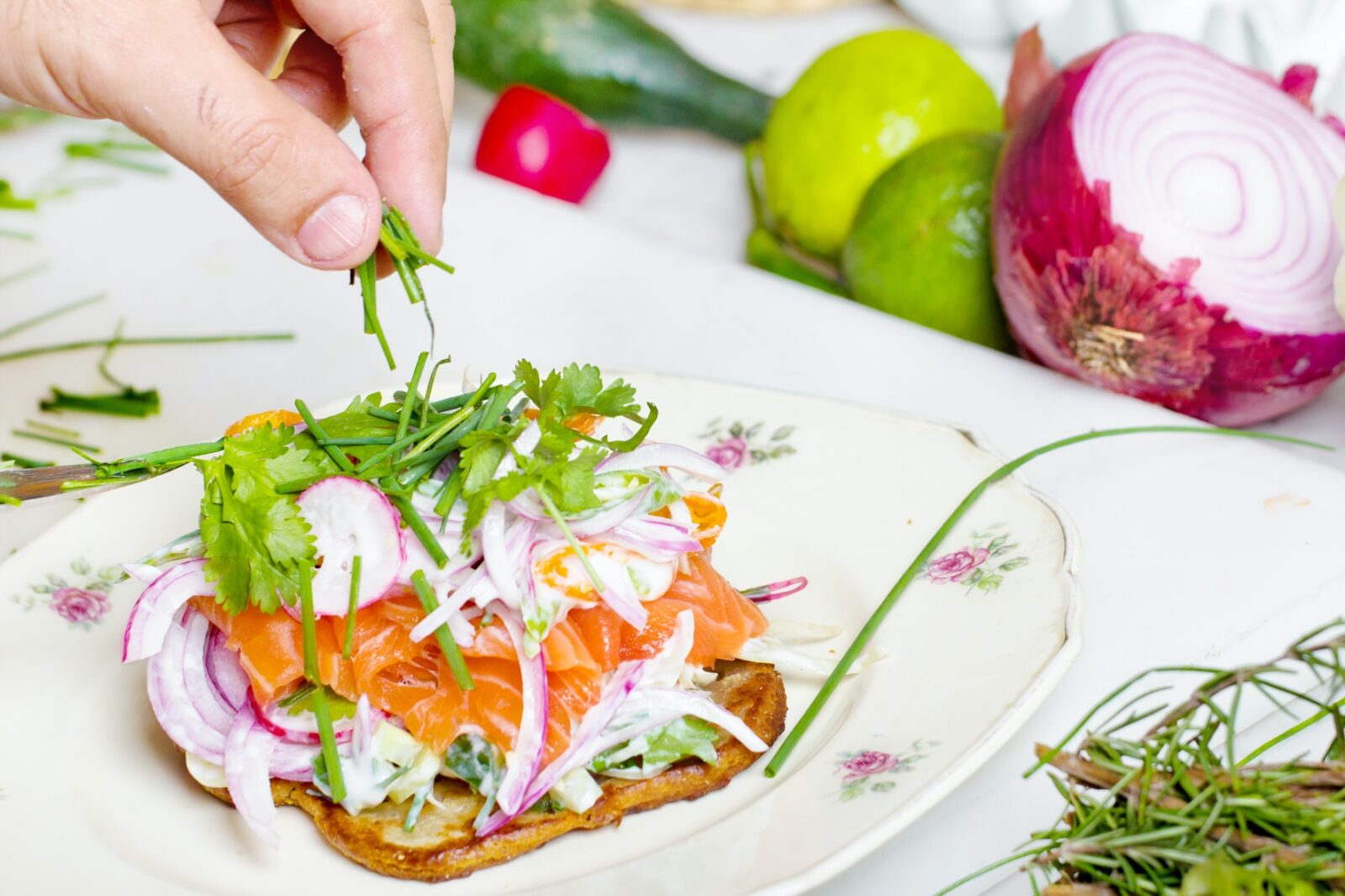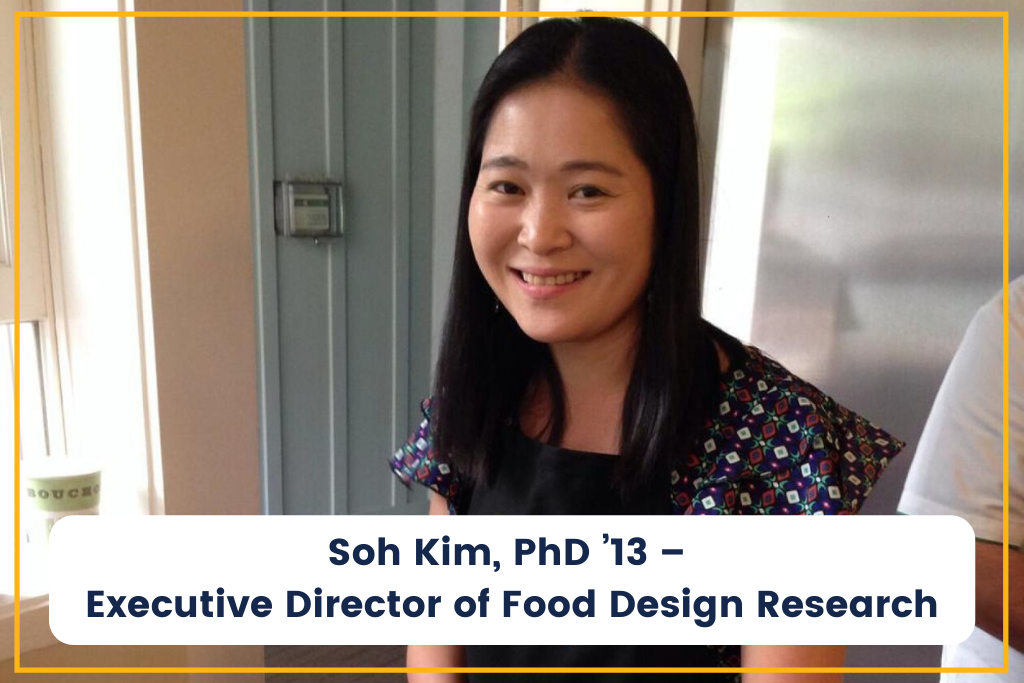Food is as adaptable and evolving as other aspects of human culture. This might seem obvious. But humans innovate through their food is one of the less-studied subjects at major universities around the world. For Soh Kim, however, this gap in research and understanding provided a perfect focus for her combined entrepreneurial interests in design and cuisine.
Let’s take a deeper look at Soh Kim’s journey, including how she got her start in the food design sphere. We’ll also see how it led her to create the FoodInno Institute: one of the most interesting and collaborative organizations to arise over the last few years.
Soh Kim’s Educational Background – Stanford to Haas
Before she founded the FoodInno Institute, Kim studied mechanical design at Stanford. An excellent student in every respect, Kim had lofty goals for her future. She completed school and eventually proceeded to UC Berkeley’s Haas School of Business in 2007. Here, she intended to further study mechanical engineering. However, she later changed to interdisciplinary studies as she tried to figure out what exactly she wanted to make of her career.
For a time, Kim tried on many different engineering hats. She spent time working at Cisco in an official engineering position, then worked for Mercedes in Germany as one of their design engineers. With all this experience, she initially felt that she could do a lot of good. She aimed to create new and innovative engineering designs for a variety of needs and industries.
Indeed, Soh’s time at Haas was marked by the pursuit of an airline engineering focus for her Ph.D. For Kim, this seemed to be a logical extension of her earlier pursuits and interests. But all it took was a random experience at Chez Panisse for her entire focus to change and a new idea to take hold.
Chez Panisse – How Kim’s Focus Changed
According to Kim, dining at Chez Panisse one time was enough to shift her perspective. Founded in 1971, this neighborhood bistro still serves lunch and dinner Monday through Saturday, and the latter only for reservations. The menu is fixed and comprised of 3 to 4 courses depending on what the chefs have in store for that night. Each meal is carefully crafted using seasonal and organic ingredients sourced from sustainable locations.
While Soh Kim intended to enjoy Chez Panisse for just a single meal, she ended up falling in love with the restaurant. In particular, she found the experience and insights of its primary creator, Alice Waters, worthy of study.
A Temporary Setback
Kim was keen on learning more about how the restaurant created such memorable moments and how the chefs who work at Chez Panisse crafted their delicacies. So she attempted to get an interview with Waters and the other chefs of the restaurant.
However, she was denied. It turned out that Chez Panisse had something of a negative history with other journalists. As such, they didn’t let Kim snoop around or ask detailed questions about their creative techniques.
Edible School Yard – Learning About Chez Panisse
But Kim wasn’t ready to give up. She decided to show how dedicated she was to learning their craft and innovative techniques by volunteering at the Edible School Yard at Berkeley. As she was already a student at the University, she was in a perfect location to dig deeper into culinary culture and make a name for herself.
She was determined to show that she would treat an opportunity to learn from Waters well. Kim spent the next couple of years volunteering with the Edible School Yard. Over time, Kim met many of the people who were part of Chez Panisse’s supplier and creative circle. She even managed to go on book tours with Alice Waters.
It was during one of these tours that Waters recognized Kim’s commitment to understanding what they were trying to do with the Chez Panisse eatery. After three years of volunteering and repeated attempts to get an interview with Waters, Kim had her foot in the door.
At last, she could use her unique design background as a special lens through which to view the Chez Panisse chefs’ creativity. As Kim herself claims, chefs are very creative, but are very rarely studied as designers in the same way engineers or mechanical experts are. Kim decided to correct that. She aimed to investigate Chez Panisse and figure out how they managed their culinary efforts through an explicitly design-focused lens. Indeed, she created her thesis around the idea.
In her investigation, Kim found that the food supply and creative ecosystem around Chez Panisse was responsible for a lot of its success.
Innovation through Food
During this time, Kim maintained her studies in airline engineering but was looking to make a more permanent switch. Her advisor, Henry Chesbrough, was initially skeptical about her idea to study Chez Panisse and restaurant creativity in general as her Ph.D. topic.
However, Kim knew what she wanted to do and committed to the idea. She liked how interdisciplinary her new focus felt. It combined some practical knowledge and insight related to engineering with more abstract and creative work involving food knowledge and innovation.

What Is Food Innovation?
Food innovation isn’t necessarily something unique to Soh Kim’s work. In a nutshell, anyone studying Food innovation needs to look at:
- changes in food in the future
- evolution of kitchens and cooking processes
- how the restaurant business will change according to consumer demands and supply changes
Kim wanted to study all three. For instance, she dove deep into how different types of kitchen appliances affect what types of food restaurants can create and how a restaurant’s business operates. In this way, she combined her prior experience with mechanical design and applied it to the creative sphere of food invention.
The Right Place at the Right Time
Coincidentally, food startups begin cropping up all over the state, presenting a perfect testing ground for Kim’s ideas and theses. She eventually completed her Ph.D. and began focusing on creating innovative food-based solutions for modern problems.
As businesses like Impossible Food showed that innovative and food-focused restaurants and eateries could be successful, economically minded developers and businessmen also changed focus. This ongoing development was enough for Stanford to create a program explicitly focused on food design and innovation. It was a perfect fit for her studies and focus.
FoodInno Institute
After Kim completed her Ph.D., she founded FoodInno. Her research had thus far consisted of studying the history and evolution of California cuisine over the last few decades. So she decided to make a switch. Specifically, she changed her focus to how California food might innovate over the future instead of remaining fixated on the past.
FoodInno’s Beginnings
FoodInno began with a “hackathon” in Barcelona – the hackathons would become a tradition for the future organization. Here, Kim gathered other creatives and fresh ideas from professionals in search of ways to use food innovation for good.
From the beginning, she imagined the FoodInno Institute as a place where innovative food creators and designers could get together and mix their ideas in a collaborative environment.
She envisioned the organization as a focal point for food academics, corporate minds, professional chefs, and even other professionals like NASA engineers. The goal was to get them together to think about the future of food. For instance, one of the most recent projects that the FoodInno Institute has served as a springboard for is “Food in Space”. This is a potential idea for 3-D printing food that astronauts might use for long-term food solutions while traveling from Earth to the Moon or even farther to Mars.
FoodInno in the Present Day
In a more modern light, the FoodInno Institute has provided key insight into modern events. A recent focus surrounds how COVID-19 might impact the economy and change food development and production across the world. Kim and others involved with FoodInno have certainly noticed the rising number of “ghost” restaurants. These are eateries that only have a “back end” and connect with customers through deliveries only.
Interestingly, Kim and others in her organization believe that such a development might be great for ethnic food. People might regularly hesitate to go into a brick-and-mortar restaurant they don’t recognize. But families or ethnic food creators might still be able to bring their creations to the public through such modern restaurant setups.
Another big innovation can be seen through packaging. For instance, Kim has observed that many companies are looking for sustainable packaging materials like seaweed, which dissolves within 90 days. Other companies might use banana leaves or other biodegradable alternatives.
Soh Kim’s Current Endeavors
These days, Kim works in one of the most creative environments in California. Now she’s the Executive Director of Food Design Research at Stanford University. She spends time at the heart of Stanford’s design divisions, working alongside imaginative people who design in totally different spheres. She’s right at home, having found an ideal balance between her interests in design and food creativity. Indeed, she proves that any entrepreneur can carve out a promising career if they successfully fuse their personal interests with great ideas.
Entrepreneurs all over the world have difficulty merging their unique focuses with practical business models. There are several lessons that Soh Kim’s story provides for aspiring innovators and inventors. How can you apply what Soh Kim learned by combining her design background with the artistic focus of cooking and food creation to your own professional goals? If you take one thing away from her journey, know that you can find a future for both your career and your personal development.
Listen to Soh’s podcast episode here and learn more about food innovation.


One Response